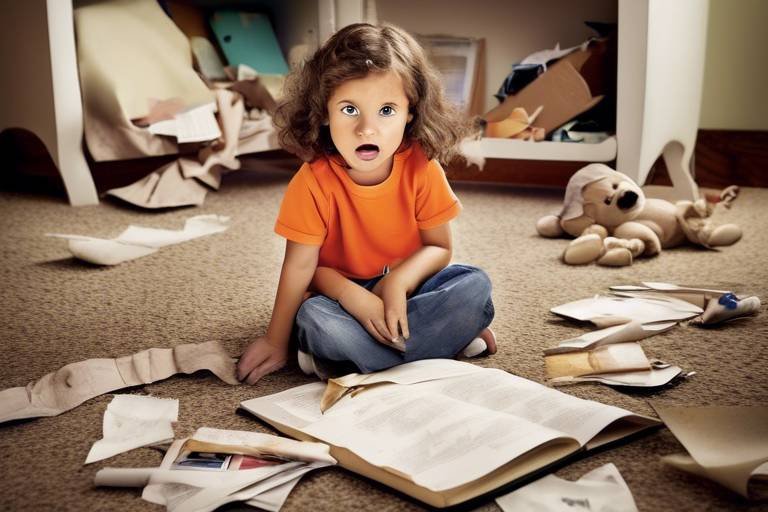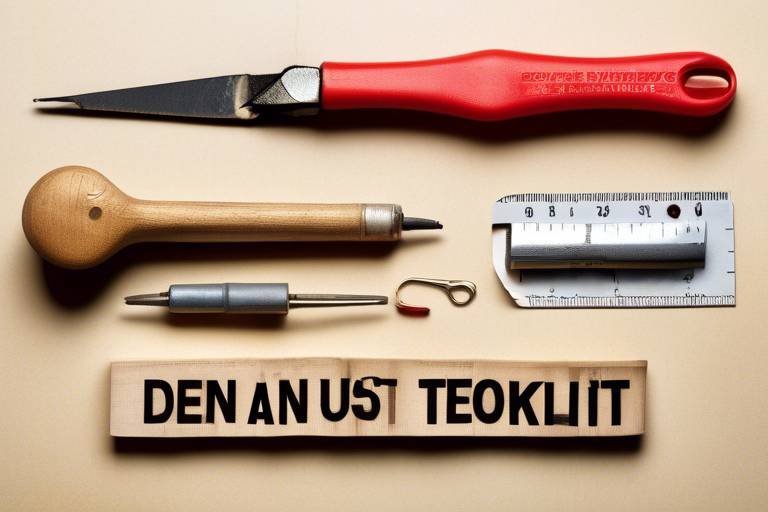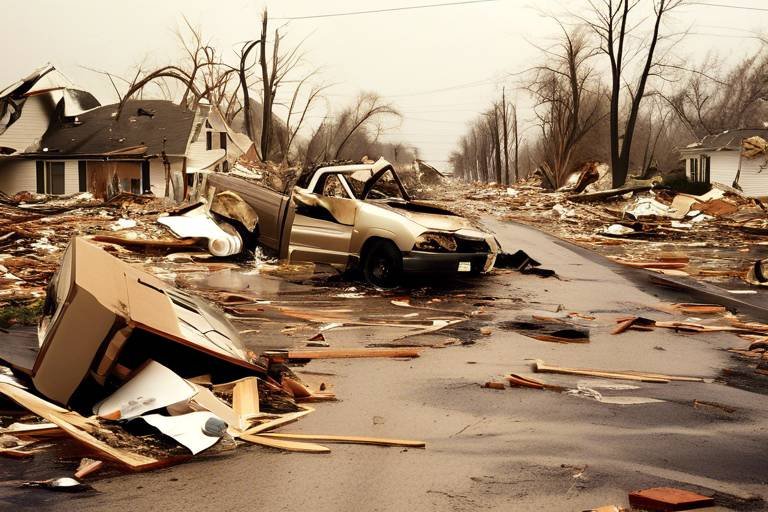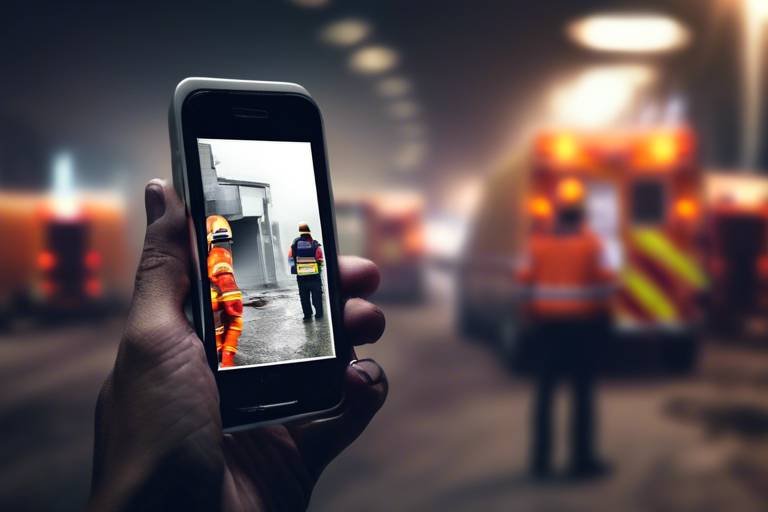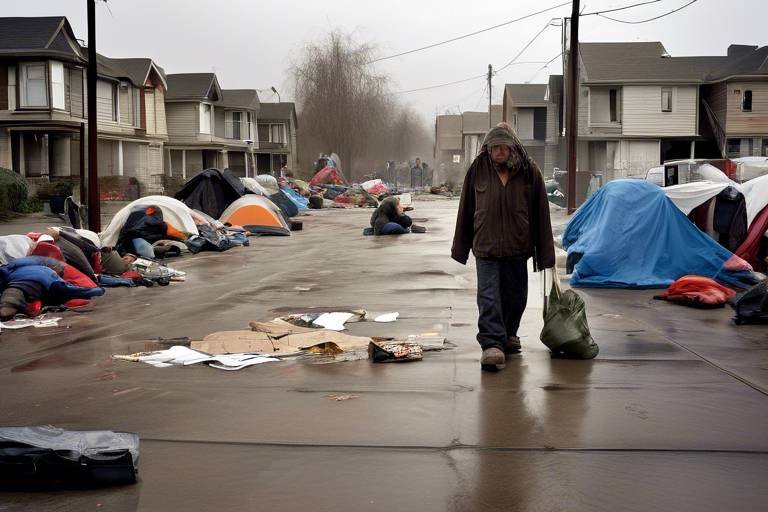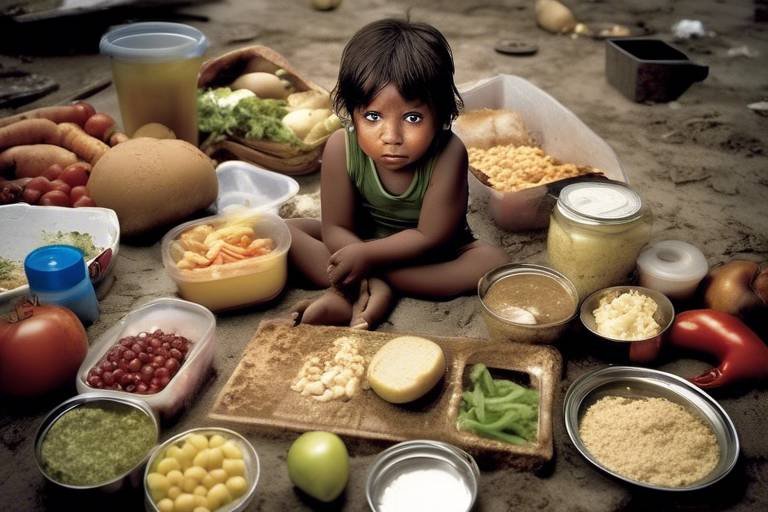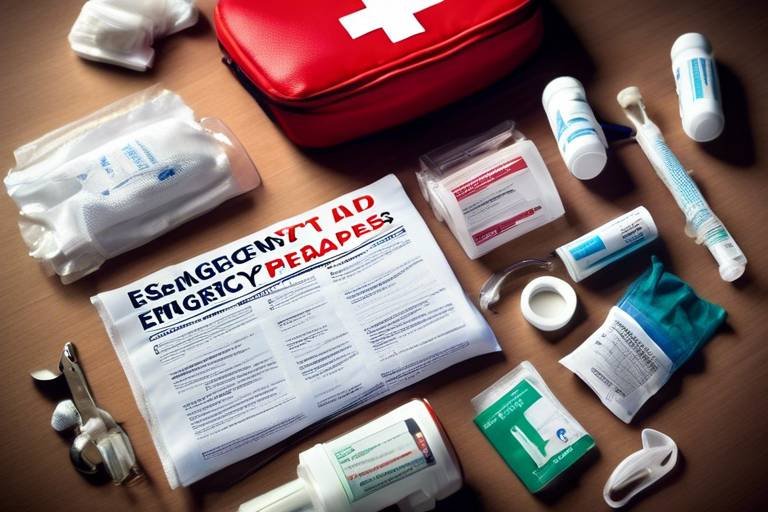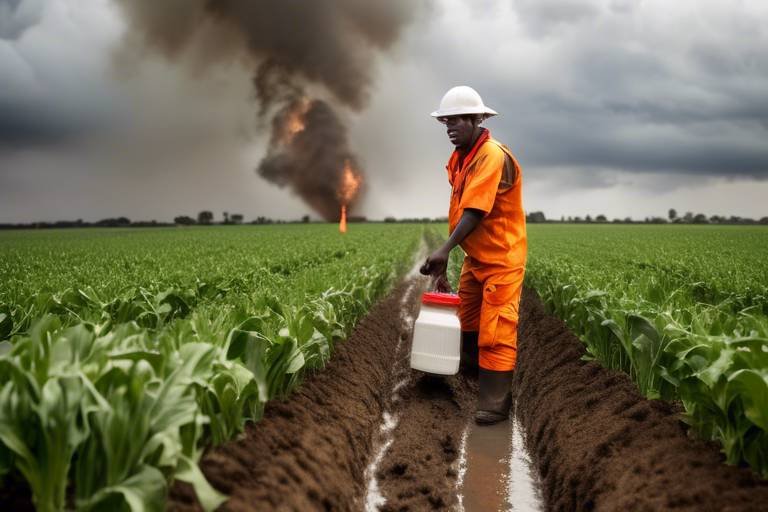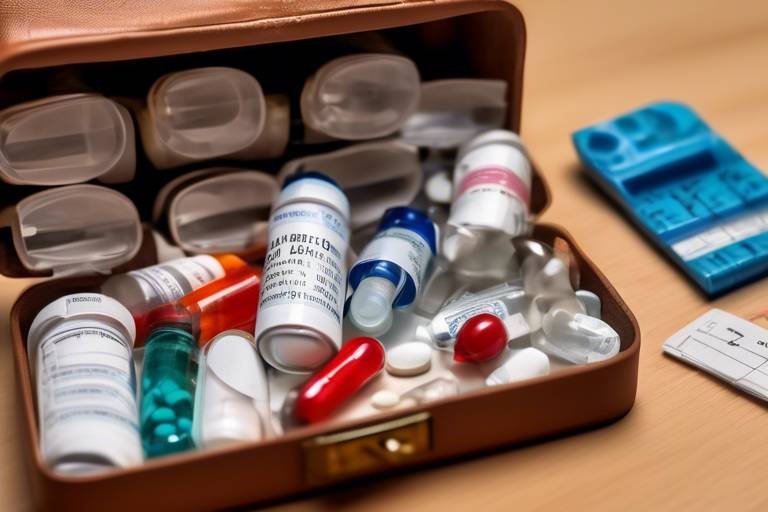Disaster Safety Guide for Children
Welcome to the ! This guide aims to educate kids about disaster preparedness, essential safety measures, and effective emergency responses to ensure their well-being during unexpected events. Imagine facing a storm, an earthquake, or even a fire without knowing what to do! Learning these skills can empower kids to act confidently in crises and potentially save lives. So, let’s dive into this important topic together!
First things first, what exactly is a disaster? It's crucial for children to grasp what constitutes a disaster, as understanding these concepts can help them recognize potential dangers in their environment. Disasters can be broadly categorized into two types: natural disasters and man-made disasters. Natural disasters include events like earthquakes, floods, hurricanes, and wildfires, which are caused by nature. On the other hand, man-made disasters arise from human actions, such as industrial accidents, terrorist attacks, or nuclear incidents. By identifying these risks, kids can appreciate the importance of being prepared. For instance, if they know that their area is prone to floods, they will understand why having a plan is essential.
Creating an emergency plan is not just an adult task; it’s something that children can actively contribute to as well! This section outlines how kids can help develop a family plan, which includes communication strategies and designated meeting places during a disaster. Think of it like a treasure map that leads everyone back home safely! Every family should have a plan that everyone knows, so nobody feels lost or scared. Encourage your children to participate in discussions about what to do in various situations, making them feel empowered and informed.
A communication plan is like a safety net. It ensures that everyone knows how to contact each other during a disaster. Kids can help establish reliable ways to stay connected with family members. For example, they can suggest keeping a list of emergency contact numbers in their backpacks or on the fridge. This list should include:
- Parents' and siblings' phone numbers
- Close relatives or friends' phone numbers
- Local emergency services numbers
By having this information handy, children can feel more secure knowing they can reach out to someone they trust if they ever find themselves in a tough spot.
Knowing whom to call in an emergency is essential. Children should memorize important phone numbers, such as family members and local emergency services, to enhance their safety. It might be a fun activity to create a catchy rhyme or song that helps them remember these numbers. After all, a little creativity goes a long way in making learning enjoyable!
Safe meeting places are vital during evacuations. Kids can help choose locations that are easy to remember and accessible, ensuring family members can reunite after a disaster. Whether it’s the big oak tree in the park or the neighbor's house across the street, having a designated spot gives everyone a clear goal to reach, reducing panic and confusion.
Regular practice helps children respond effectively in emergencies. It’s not just about knowing what to do; it’s about feeling confident when the moment arrives. This section emphasizes the importance of conducting drills at home and school to familiarize kids with safety procedures. Think of it like practicing for a big game; the more prepared you are, the better you’ll play when it counts!
Having the right supplies can make a world of difference during a disaster. This section guides children on how to assemble a basic emergency kit, including essential items like water, food, and first aid supplies. Imagine being stuck in a situation without access to food or clean water! By preparing ahead of time, kids can ensure they have the necessities to keep them safe and comfortable.
Knowing what to pack in an emergency kit is crucial. Here are some must-have items for children to include:
- Water: At least one gallon per person per day for three days.
- Non-perishable food: Enough for three days, like granola bars or canned goods.
- First aid supplies: Band-aids, antiseptic wipes, and any necessary medications.
- Flashlight: With extra batteries, because when the lights go out, you’ll need a way to see!
- Whistle: To signal for help if needed.
These items can help ensure that kids are prepared for various disaster scenarios, making them feel safe and secure.
An emergency kit requires regular check-ups. Children can help maintain their kits by checking expiration dates and replenishing supplies. It’s a great way to teach responsibility and the importance of being prepared. Set a reminder every six months to review the kit together; it can even be a fun family activity!
Q: What should I do if I hear a siren?
A: If you hear a siren, it usually means there’s an emergency. Stay calm and listen for further instructions from adults or emergency services.
Q: How can I stay calm during a disaster?
A: Practice deep breathing and remind yourself that you have a plan. Knowing what to do can help you feel more in control.
Q: What if I get separated from my family?
A: Remember your communication plan! Try to reach your designated safe meeting place or call one of your emergency contacts.
By following this guide, children can learn essential skills that will help them stay safe during disasters. Remember, being prepared is the key to feeling secure!
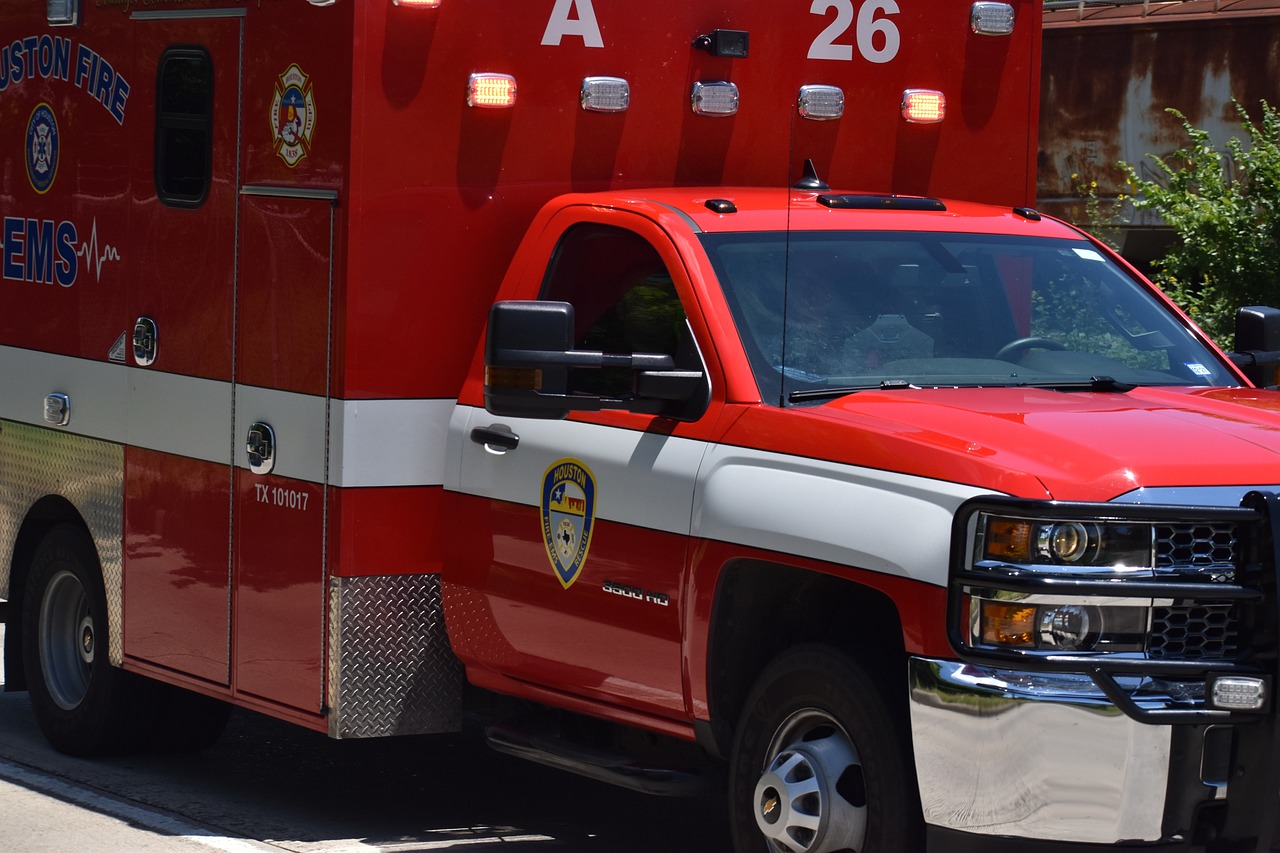
Understanding Disasters
This guide aims to educate children about disaster preparedness, safety measures, and emergency responses to ensure their well-being during unexpected events. Learning these skills can empower kids to act confidently in crises.
Understanding what a disaster is can be a little overwhelming, but it's super important for kids to know. A disaster can be anything that disrupts our daily lives and puts people at risk. There are two main types of disasters: natural disasters and man-made disasters.
Natural disasters are caused by environmental factors. These include:
- Earthquakes: Sudden shaking of the ground that can cause buildings to collapse.
- Floods: Overflow of water onto normally dry land that can damage homes and roads.
- Hurricanes: Powerful storms that can bring strong winds and heavy rain.
- Tornadoes: Violently rotating columns of air that can destroy everything in their path.
On the other hand, man-made disasters arise from human actions, often resulting in significant harm. Examples include:
- Industrial Accidents: Events like chemical spills or explosions that can harm workers and nearby residents.
- Fires: Uncontrolled flames that can spread quickly, threatening lives and property.
- Acts of Terrorism: Deliberate attacks aimed at causing fear and harm to people.
Recognizing these potential dangers in our environment is essential. It’s like being a superhero; the more you know about the threats around you, the better prepared you’ll be to face them. Imagine if you could spot a storm cloud before it starts pouring rain or hear the sirens before a fire breaks out! This awareness allows you to take action and stay safe.
Moreover, understanding disasters also means knowing how to respond to them. It's not just about knowing what can happen, but also about being ready to act when it does. For instance, if you know that a hurricane is coming, you can help your family prepare by gathering supplies or finding a safe place to stay. This proactive approach can make a huge difference in keeping everyone safe.
In summary, being aware of the different types of disasters and their potential impacts is the first step in disaster preparedness. Kids who understand these concepts are better equipped to handle emergencies, and they can help their families stay safe too. So, let’s dive deeper into how we can prepare for such situations!
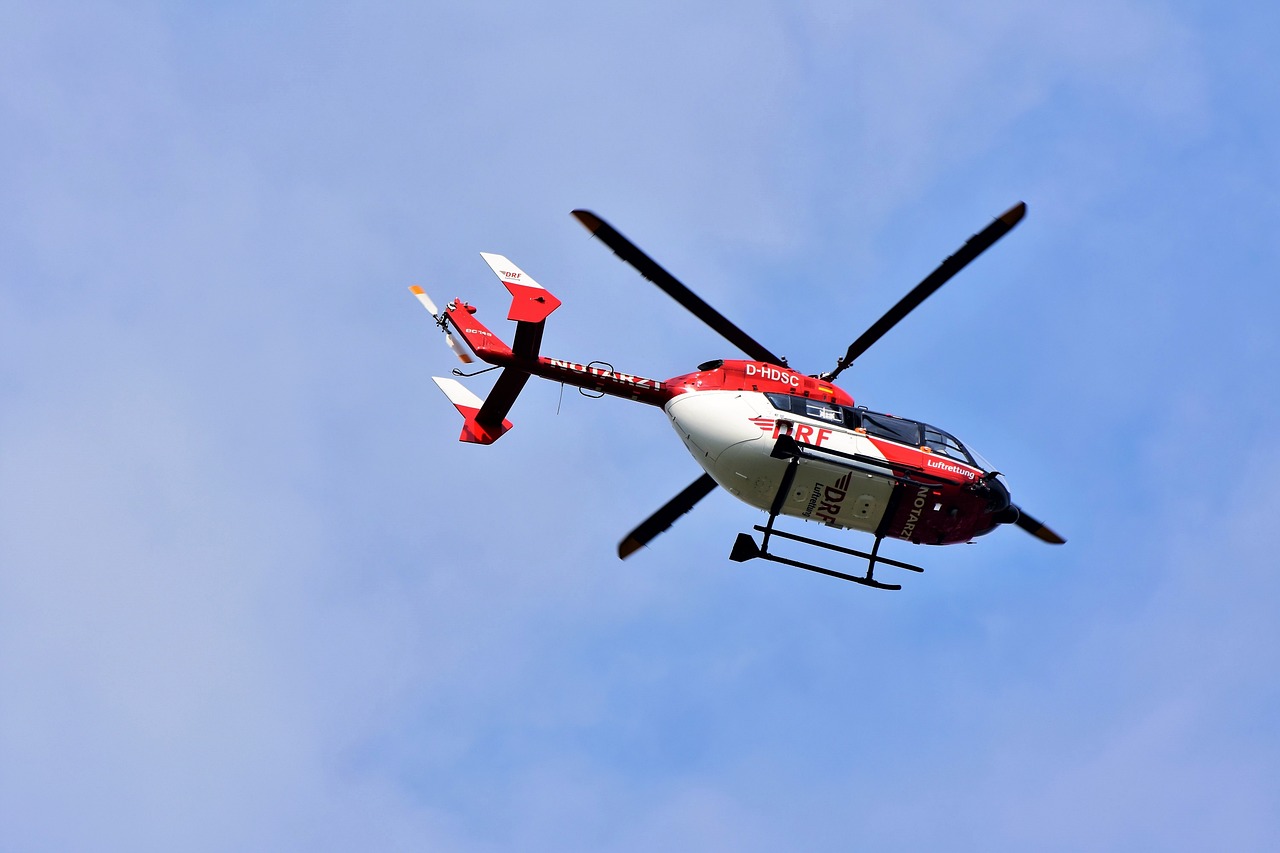
Emergency Preparedness Plans
Creating an emergency preparedness plan is not just a task for adults; it's an essential activity that children can actively participate in! Imagine being in a movie where the hero has a secret map to safety—well, that’s what an emergency plan is for your family! It’s your roadmap to staying safe during unexpected events. By involving children in this process, they not only learn valuable skills but also gain a sense of responsibility and empowerment. So, how can kids contribute to developing a family plan? Let’s break it down!
First off, it’s crucial to have a family meeting where everyone can share their thoughts and ideas. This is like a team huddle before the big game! Kids can help brainstorm what emergencies might happen in their area. For instance, if you live in a place prone to hurricanes, discussing how to prepare for that can be very enlightening. By understanding potential threats, children can appreciate why having a plan is so important.
Next, communication is key during any crisis. This is where kids can shine by helping to establish a family communication plan. They can suggest the best ways to keep in touch if you’re separated during a disaster. For example, they might prefer texting over calling, so it’s important to clarify how everyone will communicate. Kids can even help create a list of important phone numbers, which brings us to the next point!
Think of a communication plan as your family’s lifeline during a disaster. Kids can help by writing down contact information for family members, close friends, and local emergency services. This is like creating a cheat sheet for a tough exam—it's all about being prepared! Children should memorize these numbers, and parents can turn this into a fun game. For example, see who can remember the most numbers after a week of practice!
Knowing whom to call in an emergency is essential. Children should be encouraged to memorize important phone numbers, such as their parents' phones or trusted neighbors. You could even create a colorful poster with all these contacts and hang it on the fridge! This way, it’s not only a handy reference but also a fun art project that reinforces the importance of being prepared.
When disaster strikes, having a designated safe meeting place is like having a secret clubhouse where everyone knows to go. Children can help choose locations that are easy to remember and accessible. It might be the big oak tree at the park or the community center down the street. Make sure to choose places that everyone can get to quickly, even if they are at school or a friend’s house. This can be a great opportunity to teach kids about navigating their neighborhood and recognizing landmarks!
Finally, practicing these plans is crucial. Just like superheroes train to save the day, families should practice their emergency plans regularly. This could involve role-playing different scenarios, such as what to do if there’s a fire or an earthquake. By making it fun and engaging, children will not only remember the steps but also feel more confident in their ability to handle emergencies.
In conclusion, creating an emergency preparedness plan is a team effort that involves everyone, especially kids! By participating in this process, children learn the importance of safety and responsibility. They become little heroes in their own right, ready to face any challenge that comes their way!
- Why is it important for children to be involved in emergency planning?
Involving children helps them understand the importance of safety and empowers them to act confidently in crises. - What should be included in a family communication plan?
A family communication plan should include emergency contacts, preferred methods of communication, and designated meeting places. - How often should families practice their emergency plans?
Families should practice their emergency plans at least twice a year to ensure everyone remembers what to do.
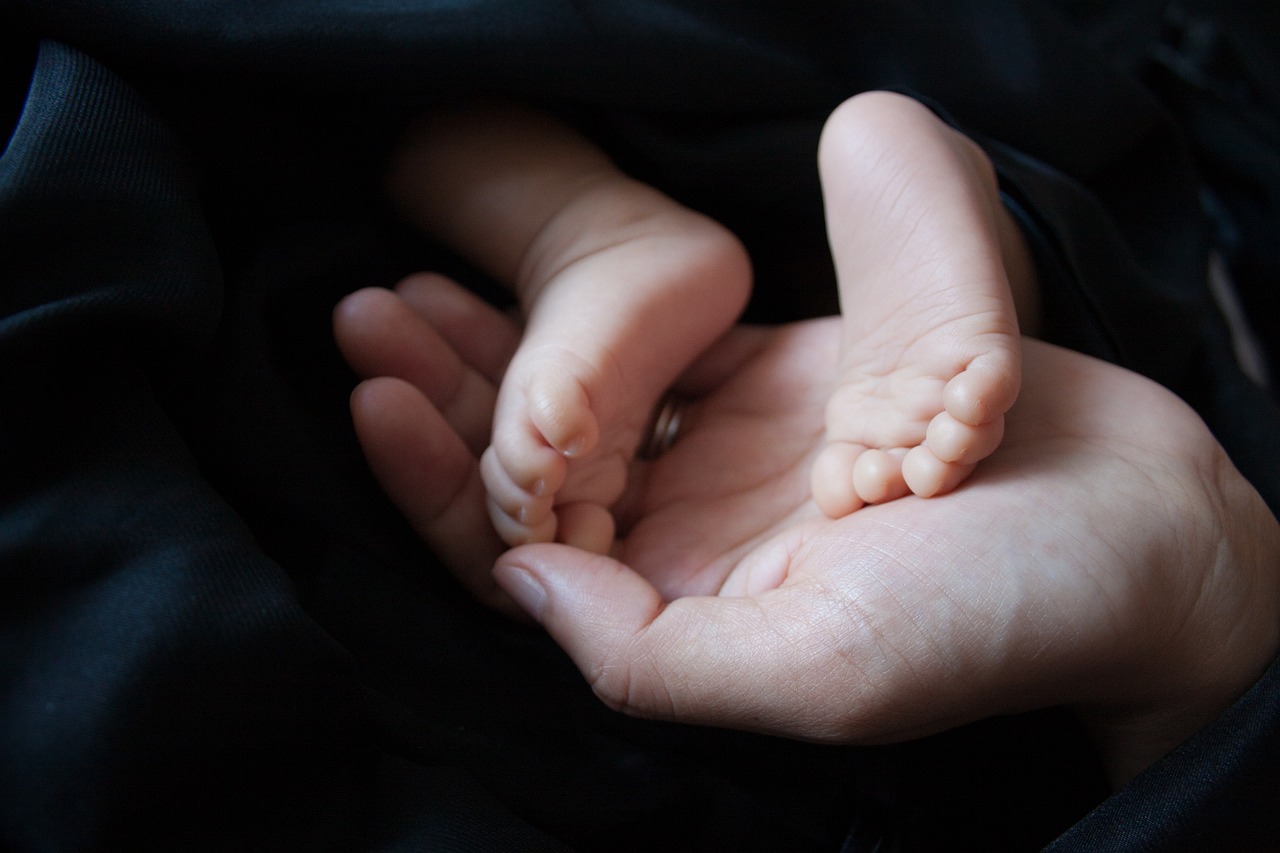
Creating a Family Communication Plan
Imagine a situation where chaos reigns, and the world feels like it's spinning out of control. In moments like these, having a solid family communication plan can be a lifesaver. It's like having a treasure map that leads you back to safety, ensuring that every family member knows exactly what to do and where to go when disaster strikes. So, how do we create this essential plan? Let’s break it down!
First things first, it’s important to gather the whole family together. This is not just a casual dinner conversation; it’s a serious discussion about safety. Start by talking about the different types of emergencies that could happen, whether they are natural disasters like hurricanes or man-made crises such as fires. Ask each family member how they feel about these situations and what they think would be the best way to respond. This open dialogue helps everyone feel included and valued, making them more likely to remember the plan when it matters most.
Next, establish a few communication methods. In the digital age, we often rely on our smartphones, but what if the power goes out or cell towers are down? It’s crucial to have backup options. Consider designating a family member or a close friend who lives outside your immediate area as an emergency contact. This person can serve as a central point of communication, helping to relay messages if local networks are compromised. Make sure everyone knows how to reach this contact, whether through text, social media, or even a good old-fashioned phone call.
Now, let’s talk about designated meeting places. In the event of an evacuation, it’s vital for family members to know where to go to reunite. Choose locations that are easy to remember, such as a nearby park, school, or a friend’s house. Make sure these spots are accessible and safe, away from potential hazards. You might even want to practice going to these locations together so that everyone feels comfortable and knows the route. It’s like a fun family adventure, but with a serious purpose!
Lastly, write everything down. Create a simple document or a chart that outlines your family communication plan. Include important phone numbers, meeting places, and any other essential information. Keep copies in easily accessible locations, like on the fridge or in each family member’s bag. This way, when panic sets in, you won’t be scrambling to remember what to do. Instead, you’ll have a clear, actionable plan right at your fingertips.
In conclusion, creating a family communication plan is about more than just safety; it’s about peace of mind. When everyone knows their role and where to go, it transforms a potentially frightening situation into a manageable one. So gather your family, have that important conversation, and prepare to face the unexpected together!
Q: What should we do if we can't reach each other during a disaster?
A: That's why having an outside contact is crucial. If local communication fails, try reaching out to someone who lives far away. They can help relay messages between family members.
Q: How often should we practice our family communication plan?
A: It's a good idea to review and practice your plan at least twice a year. This keeps everyone fresh on the procedures and ensures that any changes in contact information or meeting places are updated.
Q: What if my child is at school during a disaster?
A: Make sure your child knows the school's emergency procedures. Communicate with school staff about your family plan so they can assist your child in an emergency.
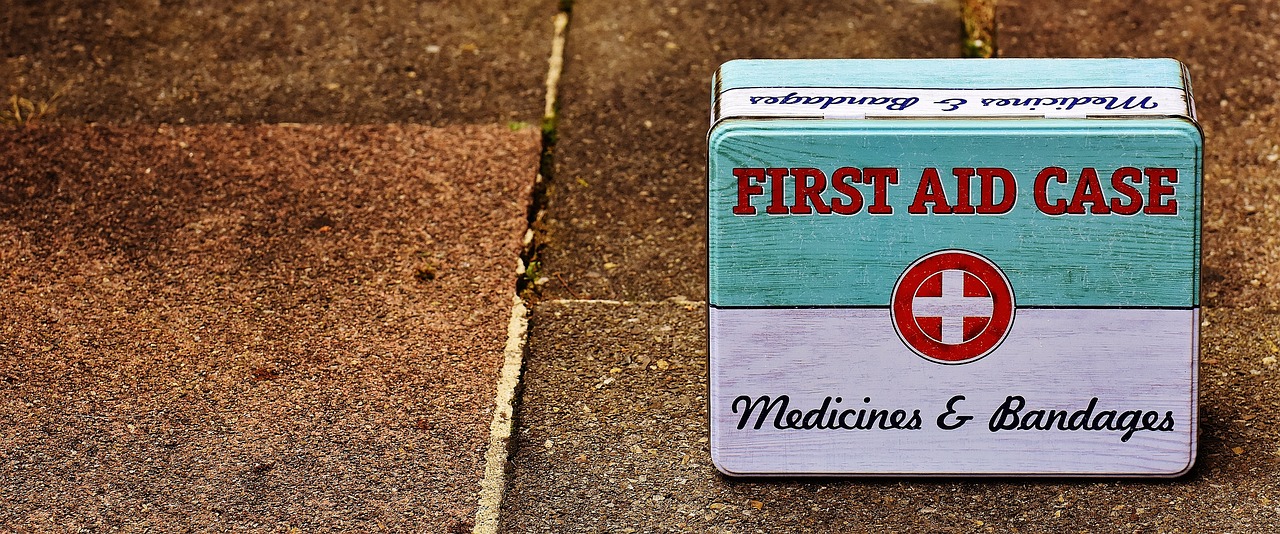
Identifying Emergency Contacts
When it comes to safety during a disaster, knowing who to contact can be a lifesaver. Imagine being in a scary situation and not knowing whom to reach out to for help! That's why it's super important for children to identify and memorize essential emergency contacts. First, think about your family members. Who are the people you trust the most? This could include parents, siblings, grandparents, or even close family friends. Make a list of these important contacts and keep it handy.
But it doesn't stop there! It's also vital to include local emergency services in your list. This includes the police, fire department, and medical services. Knowing their phone numbers can make a huge difference in a crisis. For example, if there's a fire, calling the fire department immediately is crucial. To make this process easier, you can create a colorful chart or a simple table that lists all these contacts along with their phone numbers. Here’s a quick example:
| Contact Name | Relationship | Phone Number |
|---|---|---|
| Mom | Parent | (555) 123-4567 |
| Dad | Parent | (555) 765-4321 |
| Police Station | Emergency Service | (555) 111-2222 |
| Fire Department | Emergency Service | (555) 333-4444 |
| Grandma | Relative | (555) 987-6543 |
Now, once you have your list, it's time to practice reciting these numbers. You can turn it into a fun game! Try to memorize them like you would a song or a poem. The more familiar you are with these contacts, the more confident you'll feel in an emergency. Remember, having a plan is great, but knowing how to execute it is what truly counts!
Additionally, make sure to discuss this list with your family. Have a family meeting where you go over the contacts together. This not only reinforces the importance of these numbers but also ensures everyone in the family knows who to call when it matters the most. It's all about teamwork and being prepared!

Designating Safe Meeting Places
When disaster strikes, having a safe meeting place can be a lifesaver. Imagine a scenario where your family is separated during an emergency; the chaos can be overwhelming. That's why it's crucial for children to understand the importance of designating safe meeting places. It’s like having a secret clubhouse that everyone knows about—only this one is for emergencies!
First, consider choosing a location that is familiar to everyone in the family. This could be a nearby park, a neighbor's house, or even a specific tree in your yard. The key is to pick a spot that all family members can easily remember and reach quickly. For instance, if you choose a local park, make sure everyone knows which entrance to use. It’s like picking a favorite hangout spot; you want to be able to find it easily!
It's also important to think about safety when selecting these meeting places. Ideally, they should be located a safe distance away from your home in case of fires or other hazards. You wouldn’t want to meet somewhere that could put you in danger, right? Here’s a quick table to help you visualize some potential safe meeting places:
| Location | Distance from Home | Accessibility |
|---|---|---|
| Local Park | 0.5 miles | Easy |
| Neighbor’s House | 0.2 miles | Very Easy |
| Community Center | 1 mile | Moderate |
Once you’ve decided on a few potential meeting places, it’s a great idea to practice! Just like rehearsing for a school play, you should hold a family drill where everyone knows exactly where to go and how to get there. This practice can help ease anxiety during a real emergency, making it feel more like a routine than a panic-filled situation.
Lastly, remember to discuss these meeting places regularly. Kids grow and their understanding of the world changes, so it’s essential to revisit your plans and make adjustments as necessary. Just like how you might change your favorite ice cream flavor, your meeting spots might change too as your family dynamics evolve. Keeping everyone informed and involved makes the entire process smoother and ensures that no one feels left out.
In conclusion, designating safe meeting places is a vital step in disaster preparedness for children. It empowers them to take charge and feel secure, knowing that they have a plan in place. So, gather your family, choose those special spots, and practice your plan. In the world of emergencies, being prepared can turn chaos into calm!
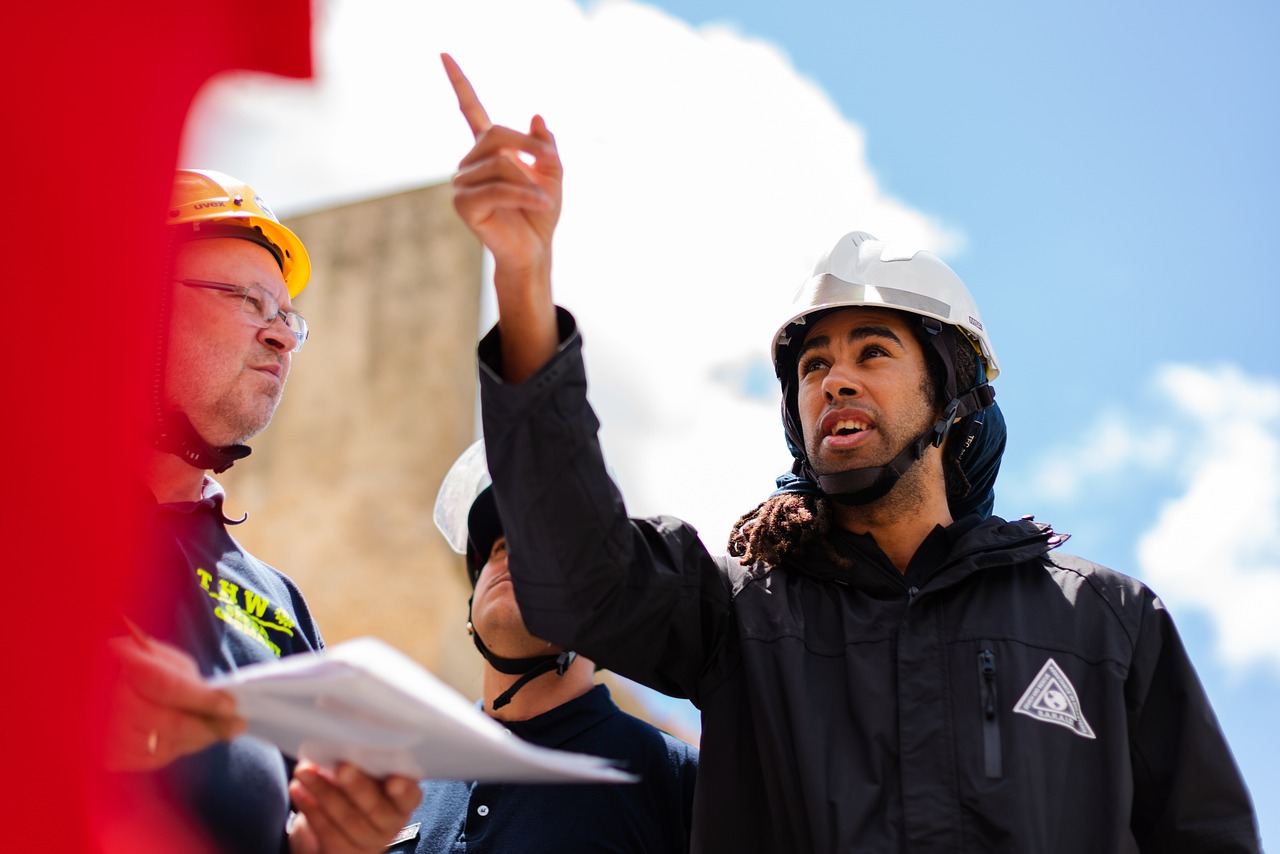
Practicing Drills and Scenarios
Practicing drills and scenarios is not just a boring exercise; it’s like a superhero training session for kids! Imagine you're a superhero preparing for the big showdown with a villain. You wouldn’t just wait for the action to start, right? You'd train, practice your moves, and get ready for anything. The same goes for being prepared for disasters. Regularly practicing emergency drills at home and school helps children become familiar with safety procedures and builds their confidence in handling unexpected situations.
Think about it: when the unexpected strikes, whether it’s a fire, an earthquake, or even a severe storm, panic can set in. But what if you’ve already practiced? You’d know exactly what to do, where to go, and how to stay safe. It's like having a map in a treasure hunt; you’ll know how to navigate through the chaos. By simulating different scenarios, kids can learn how to react quickly and calmly. For example, conducting a fire drill can teach them to identify exits, while practicing a lockdown drill can show them how to stay safe in a secure area.
Incorporating fun into these drills can make them less intimidating. Turn a fire drill into a race to see who can get to the meeting point the fastest! Or, create a game where kids act out different disaster scenarios and have to decide the best course of action. This way, they’re not just memorizing steps; they’re actively engaging and understanding the importance of each action. Remember, the goal is to make these practices feel like an adventure rather than a chore.
To ensure everyone is on the same page, it’s also beneficial to involve the entire family in these practices. Parents and guardians can take the lead, but kids should feel empowered to share their ideas. Maybe they have a unique perspective on what would work best in a certain situation. This collaboration fosters a sense of teamwork and reinforces the idea that everyone plays a role in safety.
Moreover, after each drill, it’s crucial to have a discussion. Ask the kids what they learned, what they felt, and if they have any questions. This reflection helps reinforce their knowledge and allows them to voice any concerns. By making it a regular practice to review and improve upon these drills, children will feel more prepared and less anxious when faced with real-life emergencies.
In conclusion, practicing drills and scenarios is an essential part of disaster preparedness. It transforms children from passive observers into active participants, ready to tackle challenges with confidence. So, gather your family, set up those drills, and turn preparation into a fun and educational experience!
- Why are drills important for children?
Drills help children familiarize themselves with emergency procedures, reducing panic and increasing their ability to respond effectively during actual emergencies. - How often should we practice drills?
It’s recommended to practice drills at least twice a year, but more frequent practices can help reinforce knowledge and skills. - What should we do after a drill?
Have a discussion with your children about what went well and what could be improved. This reflection helps solidify their learning experience. - Can we make drills fun?
Absolutely! Incorporate games and challenges to make the drills engaging. This helps children retain information better and reduces anxiety.
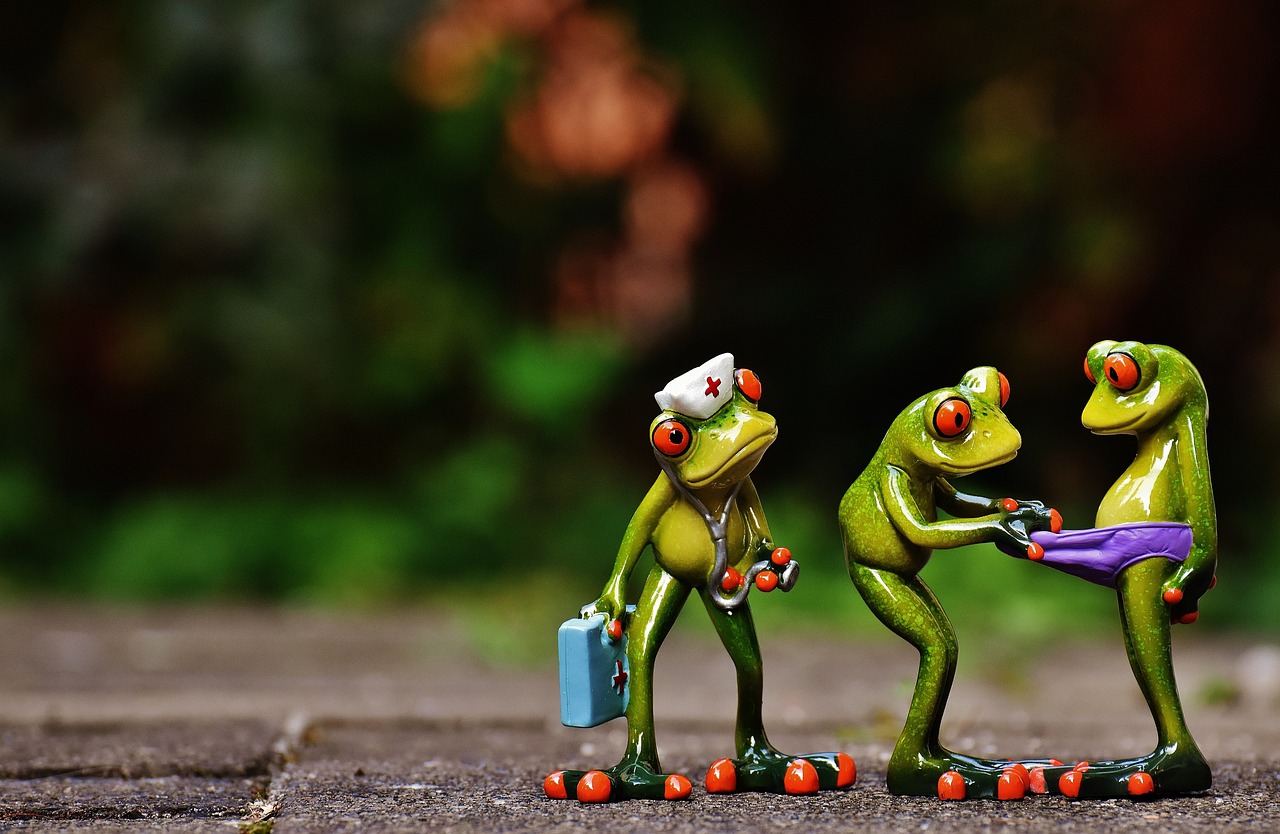
Safety Supplies and Kits
When it comes to disaster preparedness, having the right supplies can truly make a difference. Imagine being in a situation where you can't find food or water; it can be overwhelming! That's why it's essential for children to learn how to assemble a basic emergency kit. This kit should contain items that are crucial for survival during unexpected events, helping them feel secure and ready to face whatever comes their way. A well-prepared child is like a superhero equipped with the right tools to tackle any challenge!
So, what exactly should be in this magical kit? Let's break it down! First off, every emergency kit should include water—at least one gallon per person per day for three days. This is vital for hydration and can help in various situations. Next up is non-perishable food, such as energy bars, canned goods, or dried fruits. These items can provide the necessary energy and nutrients when regular meals aren't available. It’s like having a treasure chest of snacks that can keep you going in tough times!
Additionally, don’t forget about first aid supplies. A basic first aid kit can be a lifesaver. It should contain band-aids, antiseptic wipes, and any necessary medications. Think of it as your personal health assistant, ready to help you with minor injuries. Finally, having a flashlight with extra batteries is crucial. In the dark, it’s like having a guiding star to illuminate your path!
To make sure kids know what's in their emergency kit, it’s helpful to create a table that lists all the essential items. This not only serves as a reminder but also makes it fun for them to check off items as they pack them. Here’s an example:
| Item | Purpose |
|---|---|
| Water | Hydration |
| Non-perishable food | Energy and sustenance |
| First aid kit | Health and safety |
| Flashlight | Light source |
| Whistle | Signal for help |
Now that we know what to include, it’s equally important to maintain this emergency kit. Just like a garden needs regular watering, an emergency kit requires check-ups too! Children can help by periodically checking the expiration dates on food and medications, making sure everything is fresh and ready to go. This not only ensures that the supplies are effective but also teaches kids the importance of being responsible and proactive.
In summary, preparing a safety supplies kit is a fun and engaging way for children to learn about disaster preparedness. It empowers them to take charge of their safety and equips them with the necessary tools to handle emergencies. So, are you ready to become a safety superhero?
- What is the most important item in an emergency kit? While all items are important, water is the most crucial as it is essential for survival.
- How often should I check my emergency kit? It's a good idea to check your emergency kit every six months to ensure all items are up to date.
- Can kids help in preparing the emergency kit? Absolutely! Involving children in the process not only educates them but also makes it a fun activity.
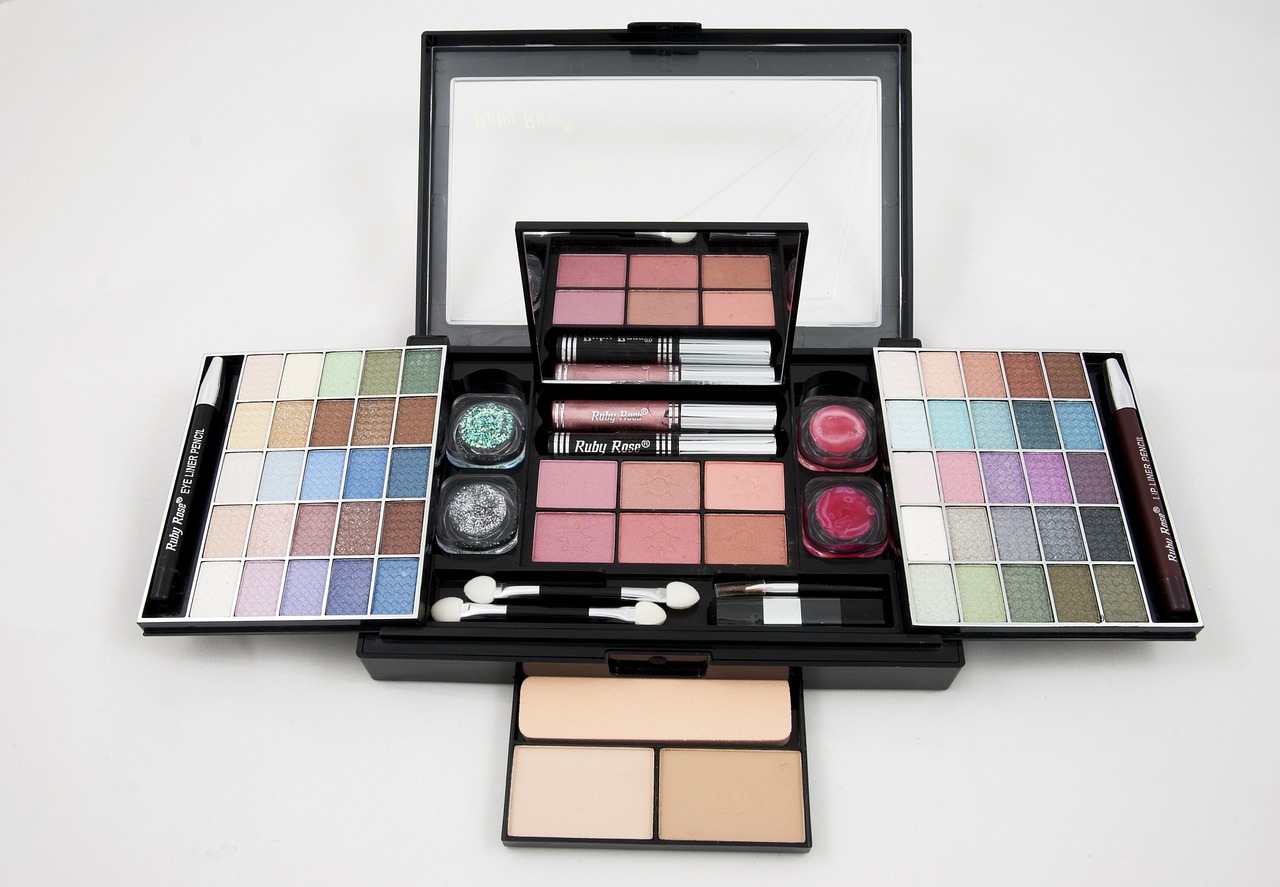
Essential Items for an Emergency Kit
When it comes to preparing for unexpected situations, having an emergency kit can be a real lifesaver. Imagine being caught in a storm or facing an unexpected evacuation; having the right supplies on hand can make all the difference. So, what exactly should you pack in your emergency kit? Let’s break it down into essential items that every child should know about.
First and foremost, water is crucial. A good rule of thumb is to have at least one gallon per person per day for at least three days. Water is not just for drinking; it can also be used for basic hygiene. Next up is non-perishable food. Think about items that have a long shelf life, like canned goods, granola bars, or dried fruits. These snacks can provide energy and comfort during stressful times.
Another important component is a first aid kit. This should include band-aids, antiseptic wipes, and any personal medications. It’s like having a mini hospital in your backpack! Additionally, don’t forget to pack a flashlight with extra batteries. In case of a power outage, a flashlight can help you navigate through the dark and keep everyone calm.
But wait, there’s more! A whistle can be a great tool for signaling for help if you’re separated from your family. It’s much easier to blow a whistle than to shout for help, especially if you’re feeling scared or tired. Also, consider including a multi-tool or a Swiss Army knife. These handy gadgets can assist in a variety of situations, from opening cans to making small repairs.
To make sure you stay connected, pack a battery-powered or hand-crank radio. This way, you can stay updated on emergency alerts and weather conditions. And let’s not forget about clothing. A change of clothes, sturdy shoes, and a warm blanket can ensure you stay comfortable, no matter the circumstances.
Finally, it’s essential to keep important documents in your kit. This could include copies of your family’s identification, insurance information, and any medical records. Store these in a waterproof bag to keep them safe from the elements. By having these items ready, you’re not just preparing for a disaster; you’re also giving yourself the peace of mind that comes with being prepared.
In summary, an emergency kit should include:
- Water (1 gallon per person per day for 3 days)
- Non-perishable food (canned goods, granola bars)
- First aid kit
- Flashlight with extra batteries
- Whistle for signaling
- Multi-tool or Swiss Army knife
- Battery-powered or hand-crank radio
- Change of clothes and a warm blanket
- Important documents in a waterproof bag
By gathering these essential items, children can feel empowered and ready to face any emergency. Remember, being prepared is not just about having supplies; it’s about knowing how to use them and feeling confident in your ability to respond. So, gather your family, pack your kit, and take the first step towards safety!
Q: How often should we check our emergency kit?
A: It's a good idea to check your emergency kit at least twice a year. This way, you can ensure that all items are in good condition and that food and water haven't expired.
Q: Can I customize my emergency kit?
A: Absolutely! Your emergency kit should reflect your family's specific needs. Consider any allergies, medical conditions, or preferences when packing.
Q: What if I have pets?
A: Don’t forget to include supplies for your pets! Pack food, water, and any medications they may need in case of an emergency.
Q: Where should I store my emergency kit?
A: Keep your emergency kit in a location that is easily accessible, such as a closet or under a bed. Just be sure that everyone in the family knows where it is!
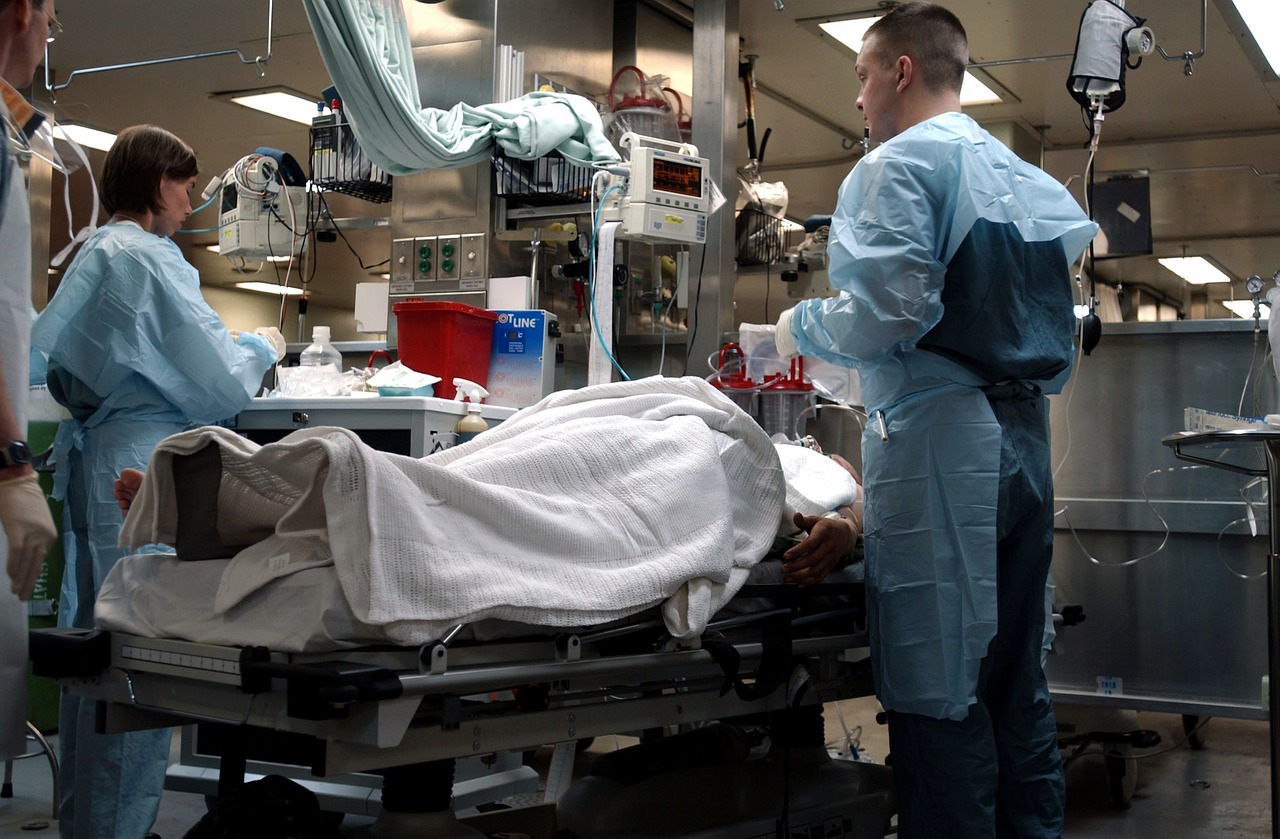
Maintaining Your Emergency Kit
Maintaining your emergency kit is not just a one-time task; it’s an ongoing responsibility that can make a world of difference when disaster strikes. Just like how you wouldn’t let your bike tires go flat or your favorite video game collect dust, your emergency kit needs regular check-ups to ensure it’s ready when you need it the most. Imagine being in a situation where you need something crucial, but it’s expired or missing—yikes! That’s why keeping your kit in tip-top shape is essential.
First things first, you should set a reminder to check your emergency kit at least twice a year. Think of it like your birthday—mark it on the calendar! During these check-ups, you’ll want to inspect the contents of your kit. Are there any items that have expired? Is there anything that’s been used up? This is your chance to replenish supplies and toss out anything that’s past its prime. For instance, food items like granola bars or canned goods can have expiration dates, and you wouldn’t want to find out the hard way that your snacks have gone stale!
Here’s a little tip: create a checklist of items in your emergency kit. You can even make it colorful and fun! This way, you can easily keep track of what you have and what you need to replace. Remember, your kit should include:
- Water: At least one gallon per person, per day.
- Non-perishable food: Think energy bars, canned goods, and dried fruits.
- First-aid supplies: Band-aids, antiseptic wipes, and any necessary medications.
- Flashlight: With extra batteries!
- Whistle: To signal for help if needed.
Additionally, it's wise to involve the entire family in maintaining the kit. This not only makes it a fun activity but also teaches everyone the importance of being prepared. You could turn it into a little family project—everyone can take turns checking different items or even creating a new checklist together. This way, everyone knows what’s in the kit and where to find things if an emergency arises.
Lastly, don’t forget to keep your emergency kit in a place that’s easily accessible. Hiding it under the bed might seem like a good idea, but in a panic, who’s going to remember that? Instead, place it in a designated spot that everyone in the family knows about, like a closet or a garage. You could even label the container clearly so it stands out. After all, when disaster strikes, every second counts!
Q: How often should I check my emergency kit?
A: It's recommended to check your emergency kit at least twice a year. You can do this during the change of seasons or on special dates like your birthday!
Q: What should I do with expired items in my kit?
A: Dispose of any expired items properly and replace them with fresh supplies. Make sure to check expiration dates regularly.
Q: Can I personalize my emergency kit?
A: Absolutely! You can add items that cater to your family’s specific needs, such as medications, pet supplies, or comfort items like a favorite toy for younger kids.
Q: Where is the best place to store my emergency kit?
A: Store your emergency kit in a location that is easily accessible to all family members, such as a closet or garage, and make sure it's clearly labeled.
Frequently Asked Questions
- What is a disaster?
A disaster can be any event that causes significant disruption, such as natural disasters like hurricanes or earthquakes, or man-made disasters like chemical spills or terrorist attacks. Understanding what constitutes a disaster helps children recognize potential dangers around them.
- Why is it important to have an emergency preparedness plan?
Having an emergency preparedness plan is crucial because it ensures that everyone knows what to do and where to go during a crisis. This helps reduce panic and confusion, allowing families to stay connected and safe during unexpected events.
- How can children help create a family communication plan?
Children can contribute by discussing with their family how to stay in touch during an emergency. They can help decide on important contacts, like relatives or friends, and even create a list of phone numbers to memorize.
- What should be included in an emergency kit?
An emergency kit should include essential items like water, non-perishable food, a flashlight, batteries, a first aid kit, and any necessary medications. Children can help by making a checklist and gathering these items together.
- How often should we check our emergency kit?
It’s a good idea to check your emergency kit at least twice a year. This way, you can ensure that all items are in good condition and that any expired supplies are replaced. Kids can take part by helping to inspect the kit and update it as needed.
- What are safe meeting places and why are they important?
Safe meeting places are designated spots where family members can go to reunite after a disaster. They are important because they provide a clear plan for where to find each other, reducing stress and confusion during an emergency.
- How can practicing drills help children?
Practicing drills helps children become familiar with safety procedures, making them feel more confident and prepared in case of an actual emergency. It’s like a practice run for what to do, which can make a big difference when the real thing happens!

